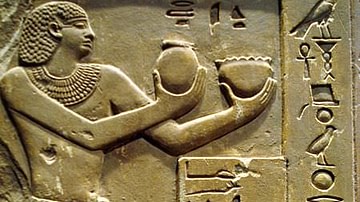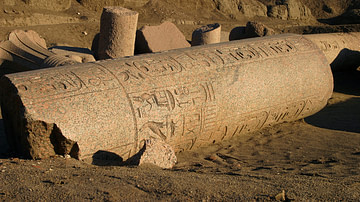The kingdoms and periods of ancient Egypt are modern-day designations for the history of the civilization. The people themselves did not refer to these eras by their modern terms but, instead, dated their history by the reign of a king or a dynasty or event. The modern terms are simply used for ease in studying Egyptian history.
The first Egyptian chronology was created by the Egyptian priest and scribe Manetho in the 3rd century BCE. After hieroglyphics were deciphered in the 19th century, archaeologists then developed his dating system. Scholars proposed different systems for the chronology of ancient Egypt with many agreeing on so-called Middle Chronology. The dates below follow this chronology as proposed by Egyptologist Ian Shaw in 2000, with slight modifications by later scholars. There is no "right chronology" for the Near East (including Egypt) as each dating system provides sound reasons for acceptance.
- Predynastic Period in Egypt: c. 6000 to c. 3150 BCE
- Early Dynastic Period in Egypt: c. 3150 to c. 2613 BCE
- Old Kingdom: c. 2613-2181 BCE
- First Intermediate Period: 2181-2040 BCE
- Middle Kingdom: 2040-1782 BCE
- Second Intermediate Period: c. 1782 to c. 1570 BCE
- New Kingdom: c. 1570 to c. 1069 BCE
- Third Intermediate Period: c. 1069-525 BCE
- Late Period of Ancient Egypt: 525-323 BCE
- Ptolemaic Period: 323-30 BCE
A "kingdom" refers to a time of unity and strong central government; a "period" to a time of disunity and decentralized government, with the exception of the Ptolemaic Period. After the fall of the Ptolemaic Dynasty, Egypt was annexed by Rome, entering the period known as Roman Egypt (30 BCE to 646 CE). This period is not always included in lists of Egyptian chronology as it was no longer an independent nation but a province of the Roman Empire until it was taken by the Muslim Arabs in the 7th century.











